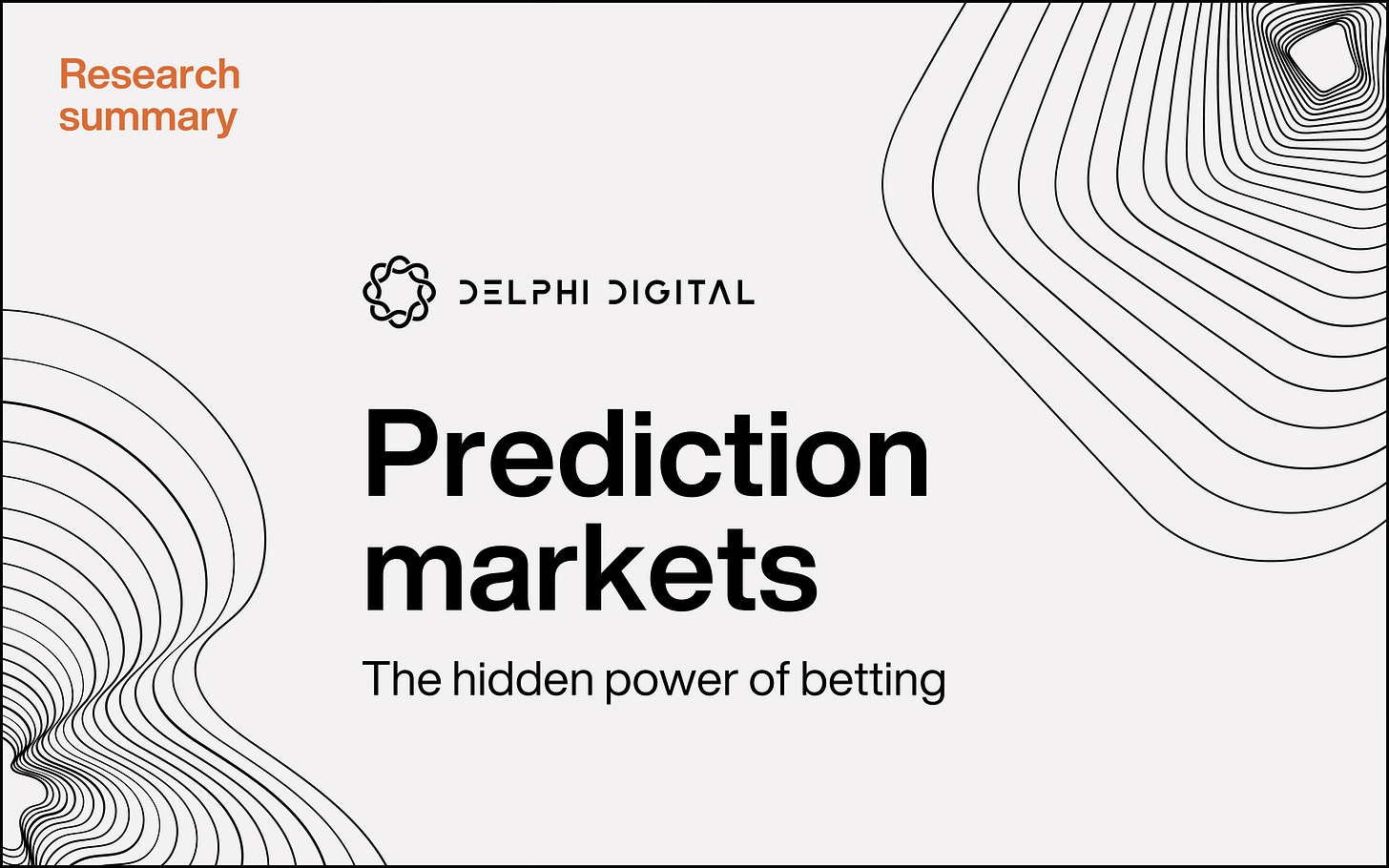The Hidden Power of Prediction Markets: A Litmus Test for the World
Prediction markets might seem fun and degen, but they actually serve as humanity's oracle. Check out this article for key findings from Delphi's latest report on prediction markets.
Today's spotlight is on Delphi's report, “Markets Will Save The World”. As I read it, my view on prediction markets shifted from "Whoa, that's just the new setting for binary options" to "Wow, this is indeed a huge thing." I can confidently say this is one of the Delphi team’s best works, and I am excited to share its highlights with you.
To enjoy this r…
Keep reading with a 7-day free trial
Subscribe to Stacy in Dataland to keep reading this post and get 7 days of free access to the full post archives.




